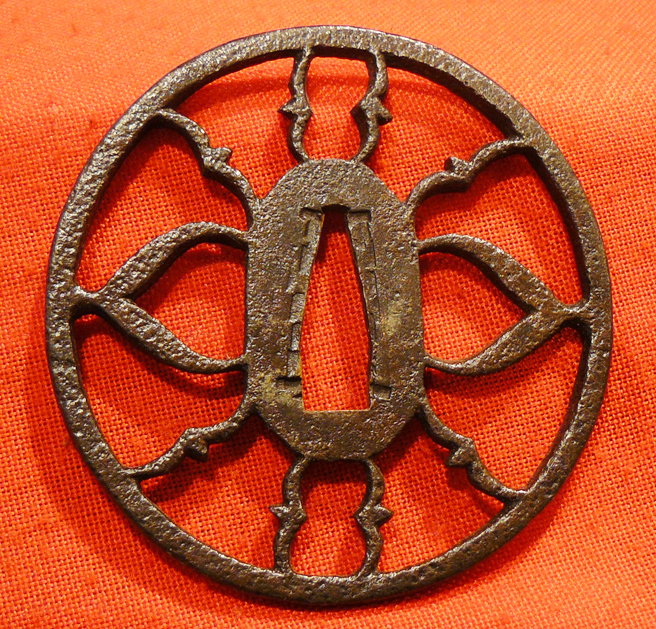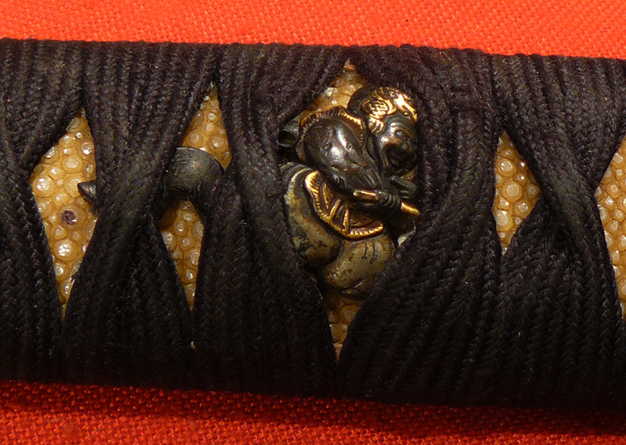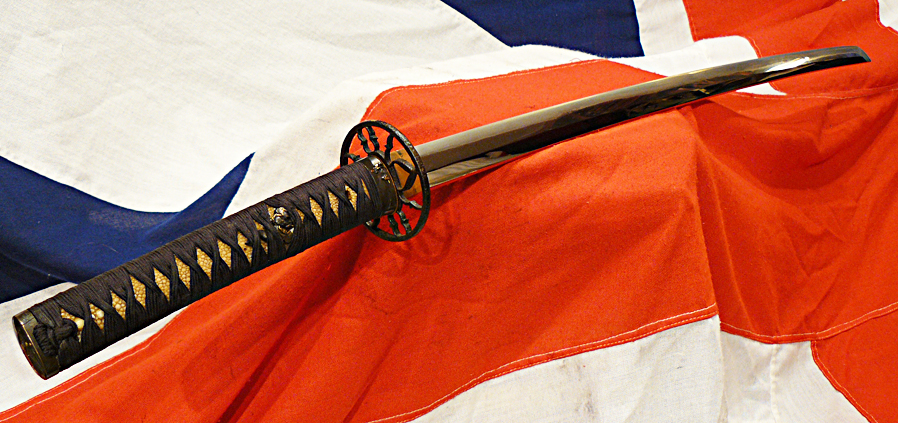A Simply Fabulous Shinto Samurai Katana, Circa 1620, With Finest Edo Shakudo & Gold Inlaid Takebori Koshirae and Multi Coloured Red & Black Urushi Lacquer Saya
The gently undulating yet exceptionaly deep hamon, almost 50% of the width of the blade, is very fine quality and this is a most beautiful an impressive katana blade. A very fine Shinto blade set in very fine quality shakudo, Edo period mounts, of multi coloured patination and pure gold onlaid decor. The saya has it's original Edo red mixed colour urushi lacquer, tied with black and red complimentary sageo, and the sword is mounted with it's koto period o-sukashi iron tsuba carved with profiles of flying geese.
The production of swords in Japan is divided into specific time periods: jokoto (Ancient swords, until around 900 A.D.), koto (old swords from around 900-1596), shinto period ( Edo swords from 1596-1780), shinshinto (late Edo swords 1781-1876), traditional gendaito (modern traditonal swords 1876-1945).
The first use of "katana" as a word to describe a long sword that was different from a tachi is found in the 12th century. These references to "uchigatana" and "tsubagatana" seem to indicate a different style of sword, possibly a less costly sword for lower ranking warriors. The evolution of the tachi into the katana seems to have started during the early Muromachi period (1337 to 1573). Starting around the year 1400, long swords signed with the "katana" signature were made. This was in response to samurai wearing their tachi in what is now called "katana style" (cutting edge up). Japanese swords are traditionally worn with the signature facing away from the wearer. When a tachi was worn in the style of a katana, with the cutting edge up, the tachi's signature would be facing the wrong way. The fact that swordsmiths started signing swords with a katana signature shows that some samurai of that time period had started wearing their swords in a different manner. However, it is thought by many, that as many as 70% of katana made were never signed at all.
The rise in popularity of katana by samurai is believed to have been due to the changing nature of close-combat warfare. The quicker draw of the sword was well suited to combat where victory depended heavily on fast response times. The katana further facilitated this by being worn thrust through a belt-like sash (obi) with the sharpened edge facing up. Ideally, samurai could draw the sword and strike the enemy in a single motion. Previously, the curved tachi had been worn with the edge of the blade facing down and suspended from a belt
The length of the katana blade varied considerably during the course of its history. In the late 14th and early 15th centuries, katana blades tended to be between 68 to 73 cm (26 to 28 in) in length. During the early 16th century, the average length was closer to 60 cm (23.5 in). By the late 16th century, the average length returned to greater lengths. However, with every new owner and early blades may have had 20 owners the blade could be reduced if required to fit, and the shorter samurai would need shorter swords however long the considered norm may have been.
One photo in the gallery with saya tied with sageo in black and red, one photo with no sageo tied.
Overall 40 inches long in saya
Code: 22659
7250.00 GBP










